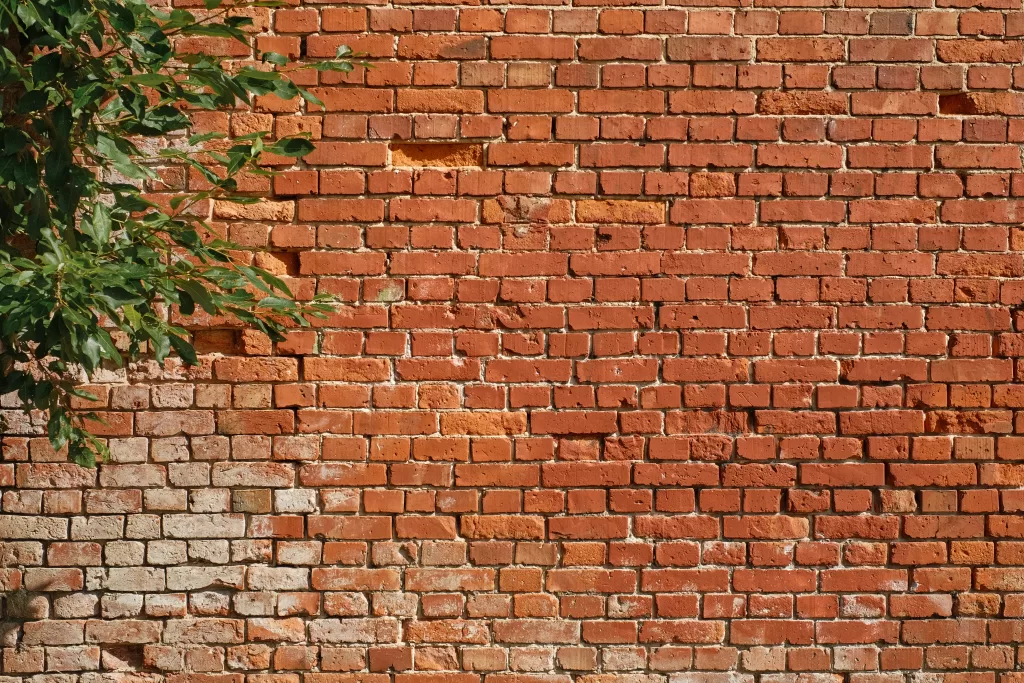The bricks and stones in bricks and stone walls, respectively, are bound by mortar. Mortar is a paste made by mixing a binding agent like cement and lime with fine aggregates and water. Pointing is the process of finishing the mortar joints. Pointing prevents water from entering your brick and stone walls. Pointing also enhances the appearance of the walls. Keep reading to learn more about what pointing in construction is, its advantages and its types.
What is Pointing in Construction?
In construction, specifically masonry, pointing is the technique of filling gaps between bricks in brick walls and stones in stone walls with mortar. When done right, pointing can enhance the appearance of walls while also contributing to the longevity and durability of a structure.
The mortar can be made from cement or lime. It is prepared by mixing lime or cement with sand and water in required proportions. Typically, a 1:2 or 1:3 ratio of lime/cement and sand is commonly used.
The Process of Pointing
Here’s an overview of how pointing is done:
-
- Mortar joints are raked out, leaving a depth of 1 to 2 cm.
- These joints are cleaned to remove loose mortar.
- These joints are made wet.
- Once the surface is prepared, fresh mortar is applied and press into the joints using a spatula or other tools.
- The new mortar must be allowed to cure for a few days. The number of days depends on the type of mortar used.
- Mortar joints are raked out, leaving a depth of 1 to 2 cm.
Types of Pointing in Construction
Pointing can be of various types, with each type offering a distinct appearance and benefit. The common ones are explained below:
-
- Flush Pointing
Flush pointing is a commonly used pointing technique. The process involves filling the raked mortar with a fresh mortar in a way that it stays flushed between two bricks or stones. The result is a smooth finish and a visually appealing wall. Flush pointing eliminates spaces that can collect water and dust.
-
- Recessed Pointing
Recessed pointing involves filling the raked joints with mortar up to a certain depth, not all the way till the surface like flush pointing. A suitable tool is used to press the mortar to a depth of about 5 mm. Since water can accumulate in the recessed joints, such masonry work should be avoided in regions that experience heavy rainfall.
-
- Struck Pointing
In struck pointing, the mortar between the bricks is pressed in a way that it forms an incline. A small trowel is held with its pointy edge pressed into the mortar at the lower edge of the joint. The trowel is drawn across the joint to form struck pointing. Since the bottom edge of the joint is recessed, the brick below sticks out.
-
- Beaded Pointing
A steel or iron rod which has a concave edge is pressed into the mortar to create a beaded mortar joint. The beaded appearance, although visually appealing, is relatively more susceptible to damage since the mortar protrudes out of the two bricks.
-
- Tuck Pointing
Tuck pointing involves filling the raked mortar with fresh new mortar which is then followed by creating a groove at the centre of the mortar joint. This groove is then filled with white cement putty and a small projection of about 3 mm is left. Tuck pointing creates an aesthetic wall while also improving its life.
-
- Keyed or Grooved Pointing
New mortar is filled into the racked mortar joint. The new mortar is pressed to form a flush point. A tool, known as a pointer, is then used to create a groove in the mortar joint. The grooves cut into the mortar to lock the bricks or stones in place.
-
- V Pointing
The process of V pointing is similar to that of keyed or grooved pointing. The only difference is the shape of the groove. While keyed pointing results in a rounded groove, V pointing leads to a V-shaped groove. A V-shaped tool is used to create the required effect.
-
- Weathered Pointing
In struck pointing, the lower edge of the mortar is recessed. However, in weathered pointing, the upper edge of the mortar is recessed, creating a slope. Rainwater can drain down these walls quickly. The final look is that of a weathered building.
Advantages of Pointing In Construction
Typically, bricks and stones have a longer lifespan than the mortar that holds it in place. Hence, mortar needs pointing.
-
- It protects the mortar joints from the weathering impact of the atmosphere and other external elements.
-
- It helps seal gaps between the bricks to prevent dampness usually caused from rainwater penetrating the walls.
-
- It adds strength and stability to the masonry structure.
-
- It improves the appearance of walls.
Opt for Portland Pozzolana Cement (PPC) from JK Cement – one of the leading cement companies in India, for all your construction needs.
FAQs
How is cement mortar made?
Cement mortar is made by intimately mixing cementitious materials, water and sand.
What is the difference between mortar and concrete?
The constituents of mortar include cement and sand mixed with water. Concrete is made by mixing cement, sand and gravel with water. Typically, concrete is stronger than mortar. Concrete is used for constructing foundations, slabs, beams, columns, etc. Mortar is used to essentially glue bricks and stones.
How is lime mortar made?
Quick lime is slaked and run into a putty. This putty and sand are mixed in specific proportions. This mix is fed into a mortar mill and water is added during the mixing process.
